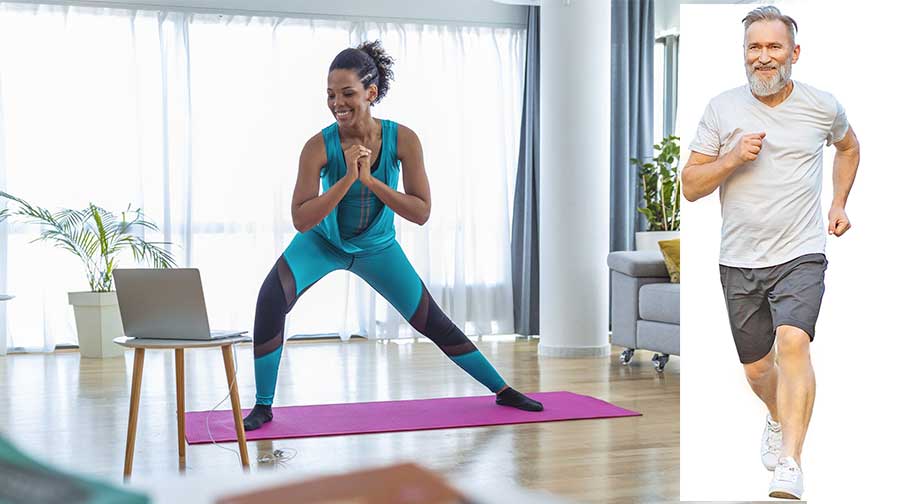Fit for Two: Exercise Guidelines During Pregnancy
- 13 Apr - 19 Apr, 2024
40 may be the new 30. But if you’re approaching (or past) the mid-century mark, you probably don’t want to work out like a 20-year-old – no matter how spry you feel. Exercise is really important as you get older. But you might have to adjust your routine to avoid injuries as you age. Here’s how to exercise safely, in the middle age and beyond.

If you were active throughout your 20s and 30s, you might have scoffed at the idea of a 'rest day' or taking the time to stretch properly after a workout class. As you enter your 40s, however, you may start to notice more intense soreness and a longer recovery time post-workout. This is normal, but also a gentle nudge from your body to work on your mobility. Mobility work helps you increase flexibility, decrease soreness, and activate the proper muscles in your workouts. Great beginning mobility exercises include a walking lunge, heel raises, and neck circles.
For most people, their 40s are characterised by being extremely busy as we all try to juggle child care, work demands, caring for aging parents, and overall feeling pretty limited with our personal time. These years may be full of memories and progress, but they could also leave little time for a trip to the gym. That's why we suggest doing all you can to incorporate "idle" workouts into your days, like taking the stairs instead of the escalator, or going for an hour-long walk during a lunch break. The goal is to squeeze in as much activity as possible.
Once people hit their 40s, especially women, it is recommended alternating between one to three days of low-impact exercise like yoga, hiking, and walking with one to three days of strength and muscle-building exercises, like pilates, TRX, kettlebells, and weight lifting.
Since bone mass and density diminish over time, this leaves our bodies more susceptible to potential injury. So, if you haven't been staying active and want to start working out more regularly, it's essential to start slow. For example, we recommend beginning with water aerobics and working your way up to hillwalking as your muscles start to strengthen. Women older than 50 may need more time to recover from injuries, so schedule a rest day or two in between exercises if needed.
Strength training is so important as we age because muscle mass helps the body burn more calories at rest than fat. Though weights are preferred, resistance bands can be influential too. Try to always put a rest day between lifting to prevent injuries. As you add strength to your routine, you should also maintain low-impact cardio. Incorporating biking and walking will ensure you get the cardiovascular benefits that are needed to keep your heart healthy.
Though you may have been a marathon runner in the past, it's important not to pressure yourself to go full-throttle in your middle age and beyond. After all, no one goes from a couch potato to an Olympic athlete overnight. It all starts with making different decisions, like walking instead of driving short distances. Or standing instead of sitting while you chat on the phone. Then, gradually add longer segments of cardio, strength training, and flexibility components to keep you on your toes.
While people often think of breaking workouts up into "arm day" or "leg day" as the ideal way to build strength, it's actually only an approach that should be used for bodybuilding goals. Instead, those in their 60s should focus on having a more generalised approach to fitness. A full-body session will boost your metabolism more than a split-day approach. Think of including pressing, pulling, planks, rotation, squats, and split stance movements (like lunges) in each session."
As you add more candles to your birthday cake, you're bound to gain a few bumps, scratches, aches, and pains along the way. It's all part of a life fully lived, but it can sometimes make us stronger on one side versus another. However, we can work to remedy old injuries and imbalances with consistent fitness. Single limb exercises are a great option for the elderly population because it can help expose weaknesses from side to side. Building strength and symmetry within the body is the best way to enhance core strength, balance, and proper movement.
COMMENTS